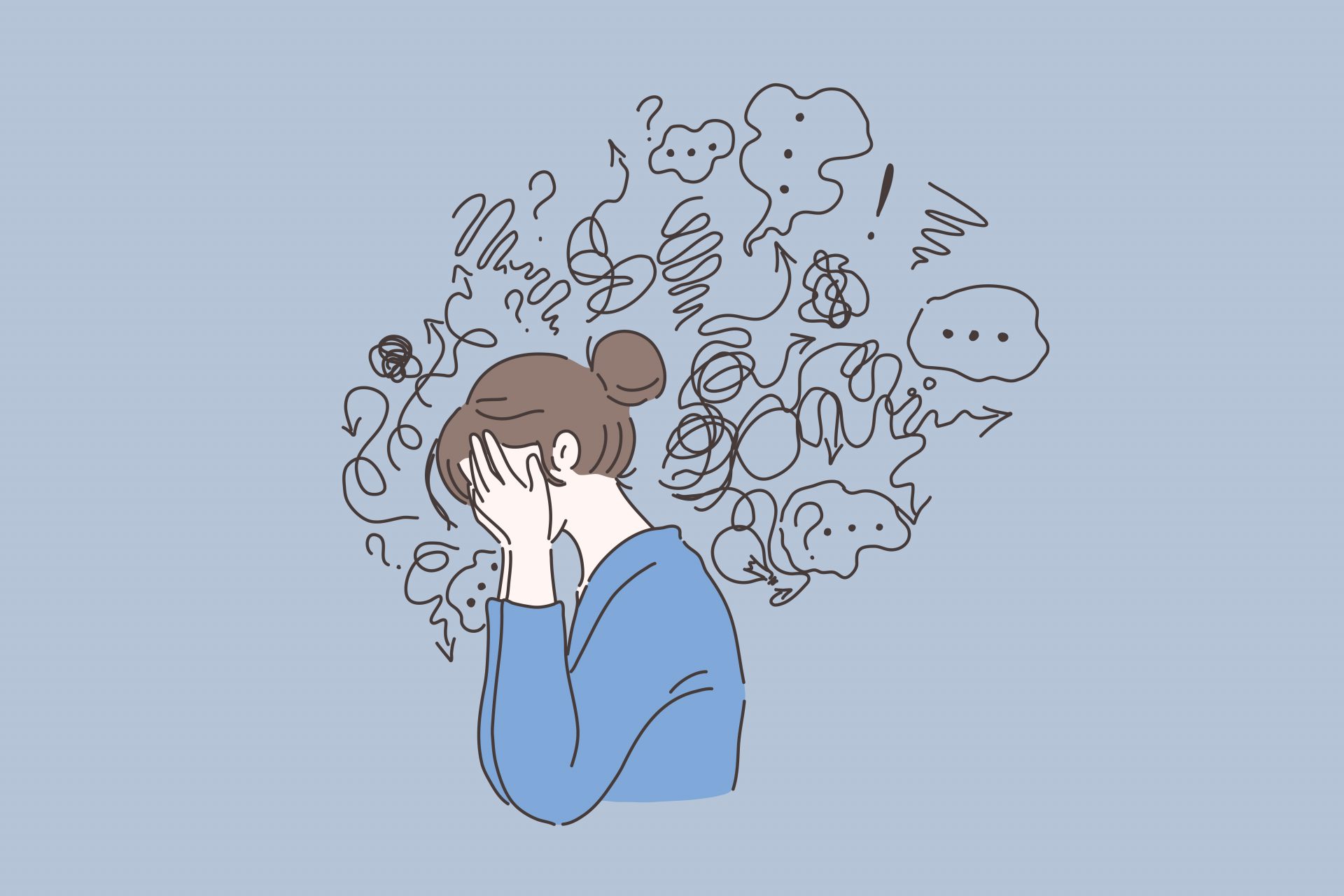Written by Lauren Geall
As Stylist’s digital writer, Lauren Geall writes on topics including mental health, wellbeing and women’s issues. She’s also a big fan of houseplants and likes to dabble in film and TV from time-to-time. You can find her on Twitter at @laurenjanegeall.
Do you tend to shy away from things that make you anxious? You could be stuck in a cycle of anxious avoidance. Here’s how to break free.
On paper, avoiding the things we don’t want to do seems logical. Getting out of your comfort zone is, spoiler alert, uncomfortable, and consciously choosing to put yourself in a situation that makes you anxious may seem a bit counterintuitive.
But while avoiding a situation or person that triggers your anxiety may be OK every once in a while, repeatedly engaging in this behaviour – also known as ‘anxious avoidance’ – has the potential to make your anxiety even worse in the long run.
According to Jacqueline Carson, a psychotherapist, hypnotherapist and meditation teacher, this is because avoidance feeds into a pattern of negative reinforcement.
“Subconsciously, you brain is working hard to keep you safe, so whenever danger approaches, your brain alerts your autonomic nervous system, which in turn triggers your fight, flight or freeze response, filling your body with cortisol and making you feel fearful,” she explains.
“The feelings in your body reinforce the automatic negative thoughts in your head, and so the cycle continues – unless you break it.”
The ‘danger’ we face now may not be as deadly as the tigers and bears our prehistoric ancestors faced, but we respond to anxiety-inducing situations in the same way. And when we choose not to face the source of our anxiety, we’re effectively telling our brain that our fear was justified, reinforcing that response.

“It is critical to break this cycle because it will continue to get stronger otherwise,” Carson explains. “Continuing to avoid places, people, situations and events reinforces to your subconscious mind that the world is a dangerous place and it is safer to stay away. Neurological pathways will then strengthen, further supporting your theory and making it harder to take control.”
As such, anxious avoidance can quickly become your go-to coping mechanism when faced with fear, making it harder for you to challenge and overcome feelings of anxiety when they arise.
And while the idea of being unable to confront something that makes you anxious may not seem that bad – after all, there’s a reason you stayed away in the first place – it can become a pretty isolating pattern.
Indeed, Carson explains: “People who experience anxious avoidance often miss out on experiences, opportunities and relationships. This can affect their daily lives and may lead to feelings of isolation, rejection and ‘what ifs’ and stop them from discovering what they are capable of.”
The good news is that overcoming anxious avoidance is possible, and the sooner you get started, the better. The bad news is that overcoming anxious avoidance requires facing the source of your anxiety – a prospect that may seem daunting if you’ve been avoiding it for some time.
However, it’s OK to take things one step at a time. To begin with, Carson recommends simply taking a moment to recognise and understand where you’re at. What have you been avoiding recently? Have those around you noticed it? How has this avoidance made you feel?
The most important thing you can do here is avoid being too critical with yourself, Carson adds: “Know that this is just your brain trying to keep you safe but it’s got a little over zealous. Know that some of the negative thoughts that pop up in your head telling you to avoid situations is just your brain going into overdrive. Be gentile with yourself here and treat yourself with kindness.”
The next step in overcoming anxious avoidance is probably the trickiest – coming face to face with the anxiety itself. To do this, however, Carson recommends following a number of smaller steps. You can check them out below.
How to overcome anxious avoidance

Slow down your thoughts
Anxiety can cause your mind to race, so practising meditation is a great way to slow down those thoughts and get to a place where you can logically analyse what’s going on.
“By taking control of the thoughts, you will interrupt the cycle,” Carson says. “You can do this by introducing a daily meditation practise into your morning routine. Meditation will help you to find the space between those thoughts. This will help to calm your automatic nervous system.”
She continues: “You could also learn some breathing techniques, which, like meditation, will calm the brain and nervous system.”
Learn how to calm yourself down
Overcoming anxious avoidance isn’t just about dealing with those initial thoughts – it’s about being able to confront whatever is making you anxious time and time again. As such, you’ll need to know how best to calm yourself down at the moment when things feel overwhelming.
To do this, Carson recommends a technique called anchoring. “Anchoring is a good technique used in hypnotherapy and NLP to induce calm, and can be used anywhere,” she explains.
“Close your eyes and think of a happy memory when you felt positive, confident and in control. Really immerse yourself in the memory until you can feel it like you are really there and at the same time squeeze together the thumb and middle finger on your dominant hand.
“Keep doing this over and over until the memory is embedded into your finger and thumb. Then, whenever you find yourself in anxious situations squeeze together the finger and thumb and bring back the happy memory. You will find any anxious feelings melt away.”
Take one step at a time
Once you feel able to analyse your thoughts and calm yourself down where necessary, it’s time to start tackling the things you’ve been avoiding. However, Carson stresses, that doesn’t mean going all in – it’s a good idea to take things slowly.
“Once you are able to regulate your emotions and control those anxious feelings, you can start to tackle those situations which previously you avoided,” she says. “Don’t overwhelm yourself though. Take your time and deal with one thing at a time.
“Once you have begun to interrupt the cycle, your brain will realise that it’s not so bad after all and you will find the anxious feelings will diminish, reinforcing to your subconscious mind that you are safe and nothing bad will happen.”
If you’re finding this part hard, then seeking professional help is a great way to give yourself an additional boost.
Overcoming anxious avoidance may require plenty of work and dedication, but it’s definitely worth it. By learning how to take control of your anxiety and face up to the things that scare you, you’ll feel more confident to take on challenges in the future. What’s not to love about that?
If you, or someone you know, is struggling with their mental health or wellbeing, you can find support and resources on the mental health charity Mind’s website and NHS Every Mind Matters or access the NHS’ guide to local mental health helplines and organisations here.
If you are struggling, you can also ask your GP for a referral to NHS Talking Therapies, or you can self-refer.
You can also call the Samaritans in the UK on 116 123 or email [email protected] for confidential support.
Images: Getty
Source: Read Full Article
